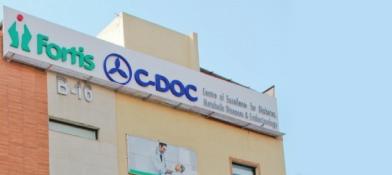Otoplasty
Overview:
Otoplasty is a cosmetic surgical procedure done to the ears. It is done to correct abnormalities of the ear. It can change the size, shape, and position of the ears using permanent sutures. Ear starts forming from the third week of pregnancy. Otoplasty is also known as cosmetic ear surgery and is done after 5 years of age till adulthood.
Indications:
Otoplasty is indicated for ear deformities. Ideally, the angle between the ear and head should be between 20 and 30 degrees. The ear is located about 15 to 20 mm from an arbitrary rim of the head. The width of the ear should be around 35 mm, about 6 cm in length, and should have a posterior rotation of 15 degrees from the vertical plane. The ear length should be equal to the nose length.
Any deviation from these can be an indication of surgery. The main indication for cosmetic surgery is a condition called prominauris where the angle between the ear and head is more than 30 degrees leading to prominent and protruding ears. Certain clinical conditions where otoplasty is indicated are:
- Mishapening of ears or earlobes at birth or due to trauma
- Small and constricted ears
- Missing cartilage of the ears
- To correct cauliflower ears in martial arts specialists
- When the previous surgery is not satisfactory
Contraindications:
Otoplasty is not indicated to change the location of ears or to increase the hearing ability.
Types of Otoplasty:
There are three types of otoplasty. These are ear pinning, reduction, and augmentation methods depending on the purpose of the ear deformity.
- Ear pinning is recommended in individuals with prominent ears as this surgery brings the ears close to the head's sides and reshapes the malformed cartilage.
- Ear reduction is done in large or oversized ears by removing part of the tissue to make them smaller.
- Ear augmentation is done in small or misshapen ears or in those with underdeveloped ears. This procedure increases the outer portion of the ear by tissue grafting.
Based on the techniques involved otoplasty is done by cartilage invasive or sculpting method, cartilage sparing or suturing method, and a combination of both techniques.
Advantages:
Otoplasty is a safe procedure with advantages.
- It corrects the misshapen or deformed ears
- It increases the confidence of individuals
- It has permanent results
Before the procedure:
Before undergoing ear surgery, an individual should understand the importance and necessity of the procedure by discussing it with the HCP. All the medications taken by the individual should be informed to the HCP along with the history of previous diseases, infections, surgeries, and allergies. Based on the medications taken, some medicines are advised to stop depending on the health condition and risk vs. benefits. These include over-the-counter medications, blood thinners, and opioid painkillers. Other medicines may be prescribed by the HCP before undergoing a biopsy.
Certain routine blood and urine investigations are carried out to rule out any infections or other conditions not known to the individual. A physical examination of the ear is done to determine the ear placement, symmetry, size, and shape. Based on the type of deformity otoplasty is planned. It is better to discuss and know the type of otoplasty done with the healthcare professional.
During the procedure:
Otoplasty is done under general anesthesia or local anesthesia with sedation. Incisions or cuts depend on the type of otoplasty correction being done. Small cuts are made on the back of the ears or within the inner creases of the ears to remove cartilage or skin. Based on the type of correction, the cartilage will be folded to the desired position. Some tissues may be removed or grafting be done to reshape the ears and sutures are placed. The entire procedure can be done in two hours.
After the procedure:
Individuals will be brought to the recovery room and their vitals are monitored. Bandages are placed on the ears for protection. Medications like antibiotics and painkillers will be prescribed to prevent infection and reduce the pain. It takes about 6-8 weeks to completely recover from otoplasty. Changes can be seen visually from 2-3 weeks after surgery. Follow-up will be scheduled after a week of surgery to remove the bandages placed after surgery. Instructions will be given about taking care of the ears. These include:
- Always sleep on the back
- Avoid sleeping on the sides to avoid pressure from the ears.
- Avoid dressing that causes pressure on the ears.
- Wear a loose headband after removing the bandages to protect the ears from pulling off.
- Avoid touching the ears
Side-effects:
The procedure is associated with certain side effects like pain, itching, redness, swelling, tingling, and numbness after the surgery.
Risks and complications:
Like any other surgery, otoplasty is associated with certain risks and complications. These include the risk of bleeding, infections, and adverse reactions to anesthesia. Scarring is one of the risks of otoplasty and is a permanent condition. Asymmetry of the ears may happen during the healing process. Temporary or permanent changes in the skin sensation are one of the risk factors of otoplasty. Stitches used to secure the ears may cause inflammation of the skin in the surrounding area. Sometimes overcorrection can occur leading to a revision surgery.
Conclusion:
Otoplasty refers to a cosmetic surgery of the ear that is done to correct ear deformities. Based on the type of deformity, the type of otoplasty is selected. Otoplasty gives facial symmetry to the individual with increased confidence and quality of life.




























